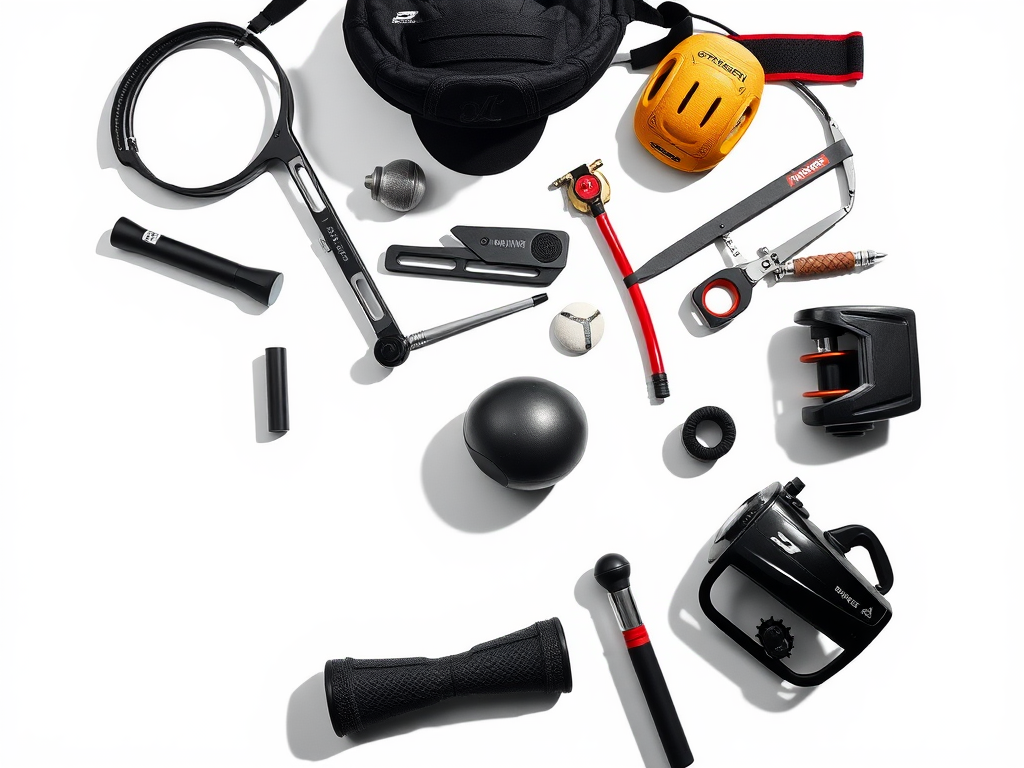Introduction
In today's fast-paced modern society, many people struggle with weight management. Faced with daily food temptations, from sugary breakfast pastries to lunch burgers and evening beer and barbecue, it's easy to lose control of your weight. Many have tried extreme dieting methods, such as eating only boiled vegetables, completely avoiding carbs, or surviving on meal replacement shakes. While these methods may lead to quick weight loss in the short term, they're often too extreme to maintain and can result in weight rebound and health issues. Today's dietary management plan focuses on scientific and reasonable approaches, helping you achieve healthy weight loss within 90 days by adjusting your diet structure and habits.
Understanding Common Misconceptions
Diet-based weight loss often fails because it goes against the body's physiological mechanisms. A 2023 Harvard School of Public Health study analyzing data from over 100,000 dieters worldwide found that extreme dieting not only lowers metabolic rate but also causes endocrine disorders. More importantly, dieting often triggers intense hunger and food cravings, leading to binge eating and creating a vicious cycle.
The research identified common misconceptions among dieters: excessive focus on weight numbers while ignoring body composition changes, blindly pursuing short-term results, developing extreme aversions to certain foods, and overlooking the importance of exercise. These cognitive biases affect weight loss results and may lead to health issues like malnutrition and decreased immunity.
New Approach
Nutritional balance is key to weight loss. After adopting this method last year, I not only successfully lost 26 pounds but also improved my long-standing stomach issues and skin condition. The core of this plan isn't simply reducing calorie intake but optimizing the nutritional composition of each meal to achieve natural weight loss while ensuring adequate nutrition.
Specifically, this method emphasizes: choosing nutrient-dense foods, properly balancing macronutrients, paying attention to meal timing, and maintaining moderate exercise. Through these scientific methods, you can effectively lose weight while improving metabolism, enhancing immunity, and improving sleep quality.
Detailed Plan
Breakfast Revolution
Traditional bread and coffee breakfasts cause hunger quickly because simple carbohydrates digest too fast, causing rapid blood sugar spikes followed by crashes, leading to premature hunger. An ideal breakfast should provide sustained, stable energy to support morning work and activities.
Here are some practical breakfast options:
- Oatmeal Energy Bowl:
- 50g plain oats, preferably steel-cut, avoid instant oats
- Soak in 200ml unsweetened almond milk
- Add 1 tablespoon natural peanut butter (about 15g)
- Add 3-4 chopped walnuts (about 15g)
- Top with half a sliced banana
-
Optional sprinkle of cinnamon for flavor
-
Protein Breakfast Pancake:
- Whole wheat flour pancake (about 80g flour)
- Served with 2 poached eggs
- 1 slice avocado
- Some lettuce leaves
-
Optional yogurt sauce drizzle
-
Greek Yogurt Cup:
- 200g plain Greek yogurt
- 20g mixed nuts
- 50g fresh blueberries
- 1 tablespoon chia seeds
- Half tablespoon honey (optional)
These breakfast options provide stable, lasting energy. The key is preparing ingredients the night before for easy assembly in the morning.
Lunch Wisdom
Lunch presents the biggest challenge for office workers. Takeout food often contains excessive oil and salt with unbalanced nutrition. Bringing your own lunch not only saves money but ensures nutritional balance. Here's a detailed lunch planning guide:
Lunch Box Preparation Guide:
- Carbohydrates (about 100-150g):
- Brown rice
- Quinoa
- Whole wheat noodles
-
Sweet potato rice
-
Protein Sources (120-150g):
- Boiled chicken breast
- Pan-seared salmon
- Steamed shrimp
- Fried eggs
-
Tofu
-
Vegetables (150-200g):
- Broccoli
- Carrots
- Asparagus
- Spinach
-
Zucchini
-
Seasonings:
- Olive oil
- Lemon juice
- Black pepper
- Sesame sauce
- Low-sodium soy sauce
Lunch Box Preparation Tips: - Choose suitable containers, preferably with compartments - Keep main dishes and sides separate to avoid flavor mixing - Separate hot and cold dishes - Pack sauces separately, add when eating - Use insulated bags to keep food fresh
Weekend Meal Prep Suggestions: 1. Bulk Carb Preparation: - Cook a week's worth of brown rice in rice cooker - Portion and refrigerate - Microwave before eating
- Protein Preparation:
- Cook chicken breast in bulk
- Cut into pieces and portion
-
Heat before eating
-
Vegetable Preparation:
- Wash and cut in advance
- Store in containers by type
- Replenish fresh vegetables every 3-4 days
Dinner Simplification
Dinner is the easiest meal to lose control of, but also the most crucial. Research from "Frontiers in Nutrition" shows that proper dinner not only aids weight loss but improves sleep quality. Here are specific dinner recommendations:
Timing Control: - Optimal dining time is 3-4 hours before bed - Avoid eating within 2 hours of bedtime - If working late, prefer small frequent meals over one large meal
Food Selection: 1. Suitable Dinner Carbs: - Brown rice (50-80g) - Whole wheat bread (1-2 slices) - Sweet potato (100g) - Oatmeal (30-40g)
- Recommended Proteins:
- Fish (bass, ribbon fish, etc.)
- Shrimp
- Chicken breast
- Tofu
-
Eggs
-
Suggested Vegetables:
- Lettuce
- Broccoli
- Cauliflower
- Bell peppers
- Eggplant
Cooking Methods: - Focus on steaming and boiling - Use minimal oil - Avoid heavy seasonings - Use herbs for flavor - Moderate use of olive oil
Implementation Tips
Shopping List
A scientific shopping list helps avoid impulse purchases and ensures you buy truly needed healthy ingredients. Here's a detailed shopping guide:
- Whole Grains:
- Oatmeal (choose plain steel-cut)
- Brown rice (preferably new crop)
- Quinoa (various colors available)
- Whole wheat bread
-
Buckwheat noodles
-
Proteins:
- Chicken breast (fresh)
- Eggs (free-range preferred)
- Salmon (frozen acceptable)
- Shrimp
- Tofu
-
Legumes (red beans, soybeans, etc.)
-
Vegetables:
- Broccoli (choose fresh, dark green)
- Spinach
- Carrots
- Celery
- Lettuce
- Bell peppers
- Eggplant
-
Zucchini
-
Fruits:
- Bananas (choose slightly underripe)
- Apples
- Blueberries (frozen acceptable)
- Oranges
- Kiwi
-
Strawberries (seasonal)
-
Nuts:
- Walnuts (raw)
- Almonds (preferably plain)
- Cashews
- Pistachios
-
Pumpkin seeds
-
Seasonings:
- Olive oil (extra virgin)
- Black pepper
- Ginger
- Garlic
- Vinegar
- Soy sauce (low sodium)
Food Storage
Proper food storage is key to maintaining healthy eating habits. Here are detailed storage recommendations:
Refrigerator Storage: 1. Refrigerator Section (2-5°C): - Fresh vegetables: wash, drain, store in bags or containers - Fruits: store moderate amounts, avoid excess - Cooked food: seal and consume within 3 days - Soy products: keep in original packaging, consume soon
- Freezer Section (below -18°C):
- Meat: portion and freeze, date label
- Seafood: vacuum pack
- Frozen vegetables: keep in original packaging
- Leftover staples: seal well
Room Temperature Storage: 1. Dry Goods: - Grains: store in sealed containers - Nuts: keep away from light - Seasonings: store in dry place
- Fresh Section:
- Some fruits: store at room temperature
- Onions, potatoes: cool, ventilated area
Common Issues
Hydration Strategy
Scientific hydration helps body metabolism and prevents overeating. Specific recommendations:
- Upon Waking:
- 250ml warm water
- Can add lemon slice
-
Helps wake up digestive system
-
Before Meals:
- 200ml water
- Drink 15-20 minutes before meals
-
Helps control portions
-
During Exercise:
- Small, frequent sips
- Adjust to exercise intensity
-
Avoid drinking too much at once
-
Before Bed:
- 150-200ml warm water
- Drink 1 hour before sleep
- Avoid disrupting sleep
Hydration Tips: - Use graduated water bottle - Set drinking reminders - Carry water bottle - Adjust intake based on weather - Supplement electrolytes during exercise
Snack Choices
Appropriate snacks can help control main meal intake. Here are detailed snack recommendations:
- Protein Snacks:
- Boiled edamame (100g)
- Dried chicken breast (30g)
- Sugar-free yogurt (200g)
-
Low-fat cheese (30g)
-
Fruits:
- Apple slices with peanut butter
- Half banana
- Handful of blueberries
-
6-8 strawberries
-
Nuts:
- Mixed nuts (25g)
- Pumpkin seeds (20g)
-
Almonds (15g)
-
Other Options:
- Whole wheat crackers (2-3 pieces)
- Sweet potato chips (homemade)
- Corn flakes (small portion)
Precautions
Consider these points for healthy weight loss:
- Gradual Progress:
- Control weekly weight loss to 1-2 pounds
- Allow body adaptation time
-
Maintain psychological balance
-
Nutritional Balance:
- Ensure macronutrient intake
- Supplement necessary vitamins and minerals
-
Adequate dietary fiber
-
Exercise Coordination:
- Maintain moderate exercise
- Choose suitable activities
-
Mind exercise intensity
-
Mental Adjustment:
- Keep positive attitude
- Don't be too harsh
- Build long-term healthy habits
Summary and Outlook
This dietary plan's core is scientific dietary management, cultivating healthy lifestyle habits for sustainable weight management. It helps achieve weight loss goals while improving overall health.
Remember, healthy eating habits are a lifelong investment. They affect not just current body shape but future health. By following this plan, you'll achieve ideal body shape and better health and life quality.
Let's begin this healthy eating journey together. Everyone's physique and lifestyle differ, so adjust the plan according to your situation. Stay patient and persistent; continuous effort will help you reach your goals.
During implementation, record daily food intake and body changes to help adjust the plan and gain satisfaction from reviewing progress. Share your experiences and insights with others, as mutual encouragement and support provide important motivation on this health journey.









